Anabolic Warfare is known for their interesting approach to formulating common supplements. We've covered several of their Project Muscle supplements, and throughout the year, they've added even more than originally announced!
Today we'll talk about Project GDA, Anabolic Warfare's glucose disposal agent (GDA), which promises to provide consumers with the performance of a designer GDA supplement, but at a fraction of the cost.
Project GDA: Glucose Disposal that won't break the bank
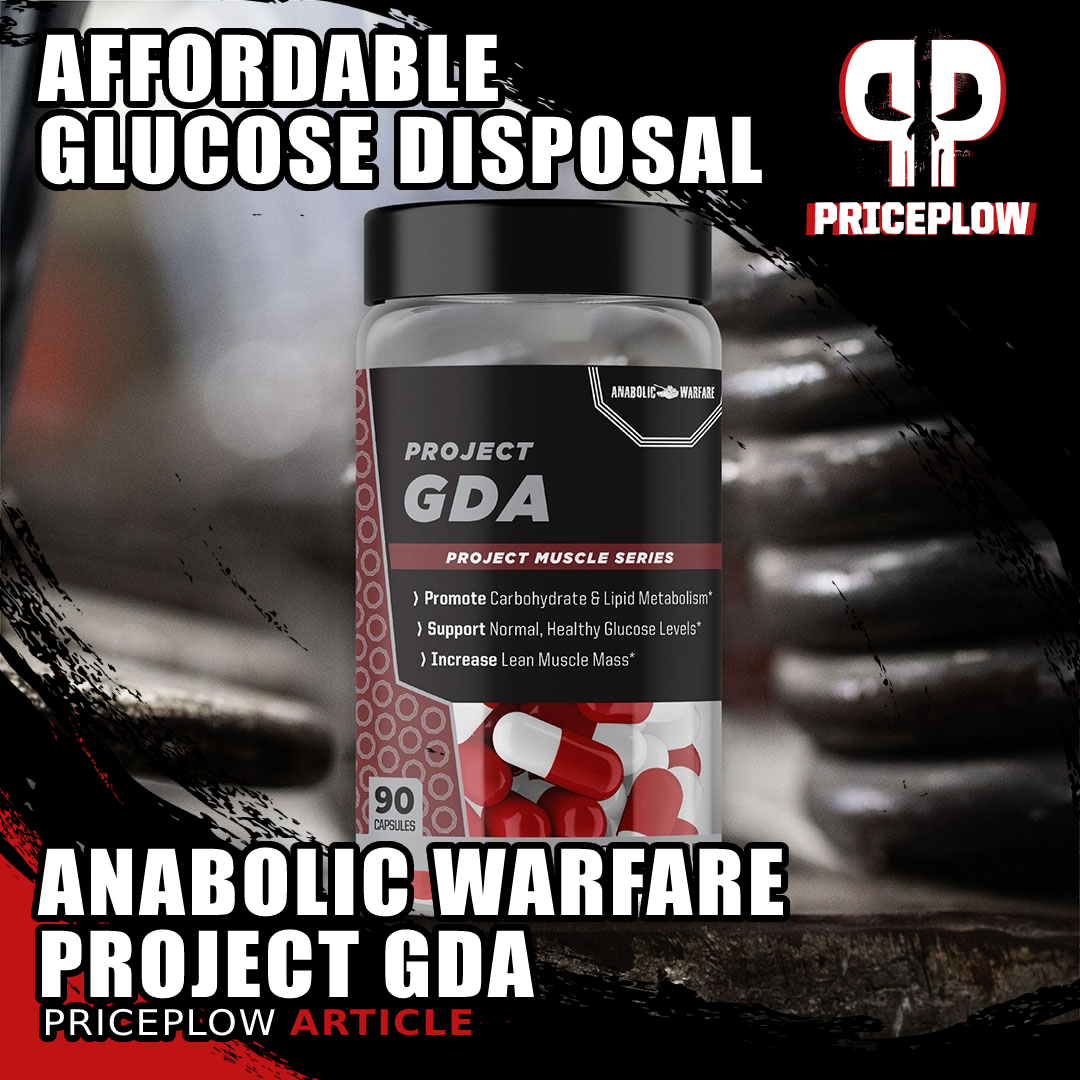
Anabolic Warfare Project GDA is a glucose disposal agent that can help drive your carbs into muscle tissue!
Glucose disposal agents are a class of dietary supplements designed to help the body more efficiently metabolize and dispose of excess glucose in the bloodstream. This is important because excess glucose in the bloodstream can lead to a range of health problems, both in the short- and long-term.
The goal here is to take Project GDA with carbohydrates in order to sensitize the muscle cells, making them store the carbohydrates as muscle glycogen rather than fat. This works best when training regularly, which we suspect is no issue for anyone looking at supplements from a brand named Anabolic Warfare!
The issue is that many GDAs are very expensive. Project GDA provides a lower-cost alternative, especially useful for those who are new to the space and want to try trusted ingredients that aren't over-zealously dosed.
Before digging in, let's check PricePlow's Anabolic Warfare news and deals:
Anabolic Warfare Project GDA – Deals and Price Drop Alerts
Get Price Alerts
No spam, no scams.
Disclosure: PricePlow relies on pricing from stores with which we have a business relationship. We work hard to keep pricing current, but you may find a better offer.
Posts are sponsored in part by the retailers and/or brands listed on this page.
This area is reserved for Team PricePlow's upcoming videos.
Subscribe to our channel and sign up for notifications so you catch it when it goes live!
Project GDA Ingredients
In a single 3-capsule serving of Project GDA from Anabolic Warfare, you get the following:
-
Gymnema sylvestre Leaf Extract 4:1 (25% Gymnemic Acid) – 500 mg
Gymnema sylvestre is a powerful herb that, like chromium, has the ability to reduce blood glucose levels.[1] This extract of Gymnema is standardized by weight for 25% gymnemic acid, the bioactive constituents of Gymnema that are primarily responsible for its effects on blood glucose.[2]
Gymnema is native to Australia, India, and Africa, where it was traditionally used to treat a range of medical problems including asthma, snake bites, chronic inflammation, and diabetes.[1] Modern scientific research has found that Gymnema does in fact have the ability to improve blood cholesterol, fight microbes, protect the liver, and reduce sugar cravings.[1]
Although gymnemic acids are responsible for most of its anti-diabetic and anti-obesity effect,[1,2] Gymnema also contains tons of saponins, flavones, glycosides, and alkaloids that come with impressive benefits of their own.[1]
Gymnemic acids can improve glycemic control by the following means:
- Increased insulin secretion
- Pancreatic islet cell regeneration
- Increased glucose uptake
- Inhibit glucose absorption by the intestine[1]
Interestingly, gymnemic acids can even enhance your perception of sweetness, meaning that you can be satisfied eating less sweetener (i.e. sugar) than usual.
Again, gymnemic acids seem to have a positive effect on blood lipids – specifically by reducing triglycerides and LDL cholesterol.[3]
Typical doses studied fall somewhere between 200 to 400 milligrams, so the 250 milligrams we're getting with this 25% standardized extract is in the range we want.[1,3,4]
-
Bitter Melon (Momordica charantia) Fruit Extract 4:1 – 400 mg
Bitter melon is a vine that's native to Asia, India, the Caribbean, and Africa—geographic areas it has traditionally been used to manage diabetic symptoms.[5]
It contains large amounts of bioactive constituents like alkaloids, polyphenol antioxidants, glycosides, resins, and saponins.[5] Unsurprisingly, modern scientific research has found that bitter melon can have antioxidant, anti-inflammatory, anti-diabetic, anti-obesity, hepatoprotective, and antilipidemic effects.[5]
In fact, it may even protect pancreatic beta cells from the metabolic damage that's behind the progression of diabetes. By helping support healthy beta cell function, bitter melon can help restore proper hormone function and inhibit the proliferation of fat cells.[5]
It might even reverse the progression of nonalcoholic fatty liver disease (NAFLD), a key component of the dreaded metabolic syndrome.[6]
Bitter melon acts by the following mechanisms:[5]
- AMPK upregulation, which we'll also discuss in the chromium section
- PPAR-γ upregulation, which causes mitochondrial biogenesis[7]
- PPAR-α upregulation, which increases fat burning[8]
-
Cinnamon (Cinnamomum verum) Bark Extract – 300 mg
Cinnamon is often paired with chromium, which is also the case in Anabolic Warfare GDA. Both of these can enhance the insulin signaling by mimicking it -- whereas chromium works through chromodulin (discussed below), cinnamon works through the polymer methylhydroxychalcone, one of its bioactive constituents.[9,10]
The upshot is improved glucose clearance and reduced blood glucose levels.
Cinnamon also contains several other bioactive constituents that possess the ability to reduce blood glucose levels and improve insulin sensitivity, including cinnamic acid, the world-famous polyphenol antioxidant epicatechin (found in green tea), coumarin, and eugenol.[11]
When you add it all up, you find that cinnamon is a powerful glycemic control agent.[9-11] As usual, the second-order effects of improved glucose and insulin control are lower cholesterol and triglyceride levels, lower HbA1C, and reduced fasting glucose and postprandial glucose.[10]
-
Berberine HCl (as berberis aristata Root, Stem & Bark) – 200 mg
Berberine is another great glucose disposal agent that can help shuttle glucose from your blood, into your cells.
Like the other ingredients we've discussed so far, berberine can reduce blood glucose levels when taken. Research shows that taking berberine with a meal can significantly reduce peak blood glucose concentration afterwards.[12-15]
Berberine is possibly the most underrated supplement in the world. It creates a fantastic series of metabolic reactions that every carb-user should know about.
Similarly to chromium, berberine helps promote glucose uptake primarily by upregulating adenosine monophosphate kinase (AMPK).[16]
There's a lot of research showing that berberine supplementation can improve blood cholesterol and triglycerides, which makes perfect sense since increased AMPK expression causes cells to burn fat as much as glucose.[17]
The AMPK-mediated improvements to blood lipids are, arguably, just as important for health as improved glucose clearance.
Berberine supplementation has been shown to [12-16,18]:
- Prevent gluconeogenesis
- Block glucose absorption
- Enhance microbiome health
- Improve blood lipids
- Reduce oxidative stress
- Decrease inflammation
Although it's not first on the Anabolic Warfare GDA ingredients label, berberine is powerful enough that it's the industry's go-to glucose disposal agent.
The 200-milligram dose is a lot lower than the standard 500 milligrams we typically see, but it's somewhat understandable since the higher serving has been known to cause gastrointestinal distress in some people.
Still, we expect the 200-milligram dose to work – just not with as big of an effect size, which is okay considering the all-star lineup of glucose disposal agents we've seen in Anabolic Warfare GDA thus far.
-
Alpha Lipoic Acid – 100 mg
Alpha lipoic acid (ALA) is a special fatty acid that's present in all of your body's mitochondria. It's involved in regulating mitochondrial energy production.[19]
ALA upregulates AMPK like the other ingredients we've discussed, but also suppresses appetite and helps break down fat in the liver.[20]
Helping remove fatty tissue from your liver is an important benefit, since fatty liver (technically, non-alcoholic fatty liver disease, or NAFLD) is intimately linked to insulin resistance, the metabolic syndrome, and type 2 diabetes. In fact, some researchers even believe that NAFLD causes diabetes.[21]
The upshot of all this is reduced blood glucose levels and increased insulin sensitivity.[21] As with all the best anti-diabetic supplements, ALA can even prevent the destruction of pancreatic beta cells, the cells actually responsible for producing and secreting insulin.[22]
Believe it or not, ALA is so good at improving glycemic control that it's actually been proposed as a treatment for the diabetic neuropathy that's caused by chronic hyperglycemia.[23] Research shows that supplementation with ALA can lower both blood glucose levels and the all-important HbA1c.[24]
-
Banaba (Lagerstroemia speciosa) Leaf Powder – 60 mg
Banaba is a tree native to southeast Asia. It has a long history of traditional use in this region, and appears in research literature as early as 1940.[25] It has anti-diabetic, antioxidant, anti-obesity, and antilipidemic effects.[25]
The primary bioactive constituent of banaba is corosolic acid,[25] a powerful anti-inflammatory and anti-microbial compound.[25] In experiments where researchers induce diabetes in rats and supplement them with pure corosolic acid, the corosolic acid has been shown to prevent the inflammation and high blood pressure that typically accompanies obesity.[26]
Corosolic acid can also inhibit gluconeogenesis while reducing triglyceride and cholesterol levels.[25] It can also help prevent steatosis, the buildup of fat in the liver that culminates with full-blown NAFLD.[28]
Still, the other bioactive constituents, like ellagitannins, oleanolic acid, and valoneic acid, are responsible for some of banaba's antidiabetic and anti-obesity effects.[25]
Supplementation with banaba leaf has been shown to promote cellular glucose uptake, improve glycemic control, increase insulin sensitivity, and block glucose absorption by inhibiting the digestive breakdown of sucrose.[25]
-
Vanadyl Sulfate 20% – 50 mg
Vanadyl sulfate is an oxidative form of the trace mineral vanadium.[29]
In animal studies, supplementation with vanadyl sulfate has been shown to not only normalize glucose and insulin function in diabetic rats, but also to help regenerate pancreatic beta cells.[29]
By improving both peripheral and (crucially) hepatic insulin sensitivity, vanadium can help correct the poor glycemic control and hyperinsulinemia associated with metabolic syndrome and type 2 diabetes.[30]
Although the mechanism of action behind vanadium is not completely understood, it's thought to mimic the action of insulin, much like cinnamon and chromium.[31]
Alongside chromium, this is one of the original blood sugar protection ingredients that was used quite a bit before the GDA category even became a thing!
-
Grains of Paradise (Aframomum melegueta) Seed Extract (Paradoxine) (12.5% 6-Paradol) – 25 mg
Grains of paradise is a kind of pepper plant native to western Africa. Extracts of this plant are standardized for 6-paradol, a powerful antioxidant that beneficially alters the composition of fat in the human body.
To understand how grains of paradise works, you need to know the difference between two types of fat: white adipose tissue (WAT) and brown adipose tissue (BAT).
They do very different things: whereas WAT is your body's long-term energy storage, and is only burned when calorie intake is dangerously low,[32] BAT is metabolically active.
BAT is the result of a process called non-shivering thermogenesis (NST). In NST, mitochondria burn calories as heat.[32] The evolutionary purpose of this mechanism is to help your body maintain its internal temperature in the face of bracing cold exposure.
Researchers found that the group consuming the Grains of Paradise extract had a significantly greater increase in energy expenditure, due to increased BAT activity, than the group not receiving the GP extract.[33]
The higher your BAT-to-WAT ratio, the faster your metabolism is.[32,34] It's important to note that BAT burns both glucose and fatty acids for heat, meaning that having more BAT can simultaneously improve blood glucose and blood lipids.[32]
So with all that in mind, we can understand the significance of 6-paradol converting WAT to BAT, thus speeding up the metabolic rate and encouraging healthy glycemic control and body composition.
An actual clinical trial in healthy young men between the ages of 20 and 32 found that a 40-milligram dose was enough to significantly increase subjects' measured basal metabolic rate.[35]
A similar study in healthy young women, but using a smaller dose, found that grains of paradise can decrease visceral fat— the type of fat most likely to cause metabolic damage by increasing inflammation and cortisol production.[33]
-
Chromium (as Chromium Nicotinate Glycinate Chelate) (TRAACS) – 300 mcg (857% DV)
In the upper "essential vitamins and minerals" area of the supplement facts panel is our lowest-dosed ingredient, Chromium, formulated as TRAACS Chromium Nicotinate Glycinate Chelate. Chromium is an in vogue glycemic control agent – it helps keep blood glucose and insulin levels from inching-up too high.
Chromium is an essential mineral, meaning that your body's chromium requirement must be satisfied by food or supplements. As a trace mineral, it's required by your body in small amounts. Foods high in chromium include meat, poultry, eggs, cruciferous vegetables, grapes, and whole grains.[36]
The next wave of warfare is here from Austin, TX based Anabolic Warfare -- Project Muscle! Project GDA is a new supplement added to the arsenal after the original ones were annoucned.
But few bother to learn about its underlying mechanism. As it turns out, chromium keeps blood sugar low because it drives cellular glucose uptake, making this a great first ingredient for Anabolic Warfare GDA. The mineral is involved in many different metabolic processes, but is best known for its ability to facilitate insulin function in cells.
Chromium and chromodulin
Chromium affects insulin through its interaction with an oligopeptide called chromodulin.[37,38] Chromodulin upregulates the function of insulin receptors on your body's cells, which helps those cells take up glucose.[39] The upshot of this is that once glucose enters your cells, it's no longer in your blood – this is a big part of chromium's ability to regulate blood glucose and blood insulin levels.
Chromodulin does this by mimicking the action of insulin. But it's not just an insulin imitator – some studies have found that chromodulin upregulation has synergistic effects with insulin, improving insulin signaling and function in ways that can't be explained just by the additive action of chromodulin and insulin.[40]
Chromium upregulates adenosine monophosphate-activated protein (AMPK)
Besides improving insulin signaling, chromium has also been shown to increase the expression of an enzyme called adenosine monophosphate-activated protein (AMPK).[41] It does this, again, by binding to chromodulin.[42]
As one of the body's metabolic master switches, AMPK basically tells your mitochondria how much energy to produce.[44] Cellular energy production, of course, consumes calories in the form of glucose and fatty acids, so upregulating AMPK in effect speeds up your metabolism.[45]
Research consistently shows that AMPK upregulation can improve body composition, by both burning fat and building muscle.[46]
TRAACS minerals
The Real Amino Acid Chelate System (TRAACS) is a great way to go about mineral supplementation. When minerals are chelated to amino acids, they become significantly more bioavailable, since the small intestine is better at absorbing amino acid compounds than straight minerals alone. The upshot is that you, the consumer, are getting real value for your money whenever you see TRAACS in a supplement.
This is successfully demonstrated in a rodent study where chromium(III) glycinate (CrGly) improved blood glucose levels more efficiently than other forms of chromium.[47]
Dosage and Directions
Take three capsules before your largest carbohydrate-based meal -- all the better if this is your pre-workout meal, so that you can drive as much carbohydrate as possible in the muscle glycogen!
Conclusion
We love the unusual-yet-effective ingredients in this formula – banaba and bitter melon are perhaps the two most interesting, At the same time, we'd definitely like to see the industry pay more attention to vanadyl sulfate.
Overall this formula is an interesting blend of the old and new. Alongside chromium, vanadyl sulfate is one of the OG GDA ingredients. Berberine is an old glucose disposal mainstay, and although this dose isn't the largest, we think the big doses of chromium and cinnamon can help make up for it -- and it keeps the price down for beginners.
Grains of paradise has come into vogue more recently, but is by now one of our favorite ingredients. We love seeing a WAT-to-BAT converter finish off this formula, as this is a great long-term investment in glycemic control and body composition.
Anabolic Warfare Project GDA – Deals and Price Drop Alerts
Get Price Alerts
No spam, no scams.
Disclosure: PricePlow relies on pricing from stores with which we have a business relationship. We work hard to keep pricing current, but you may find a better offer.
Posts are sponsored in part by the retailers and/or brands listed on this page.
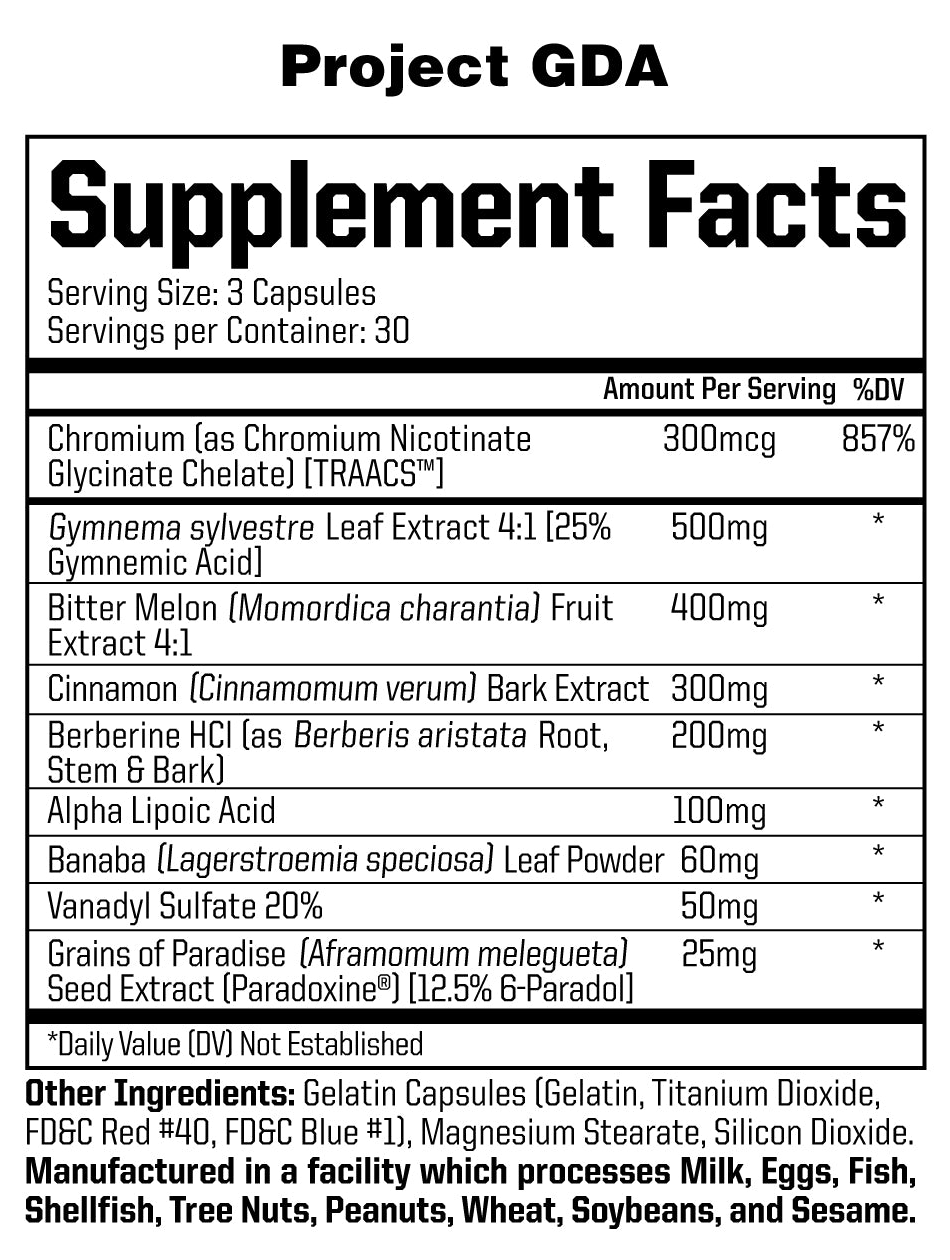
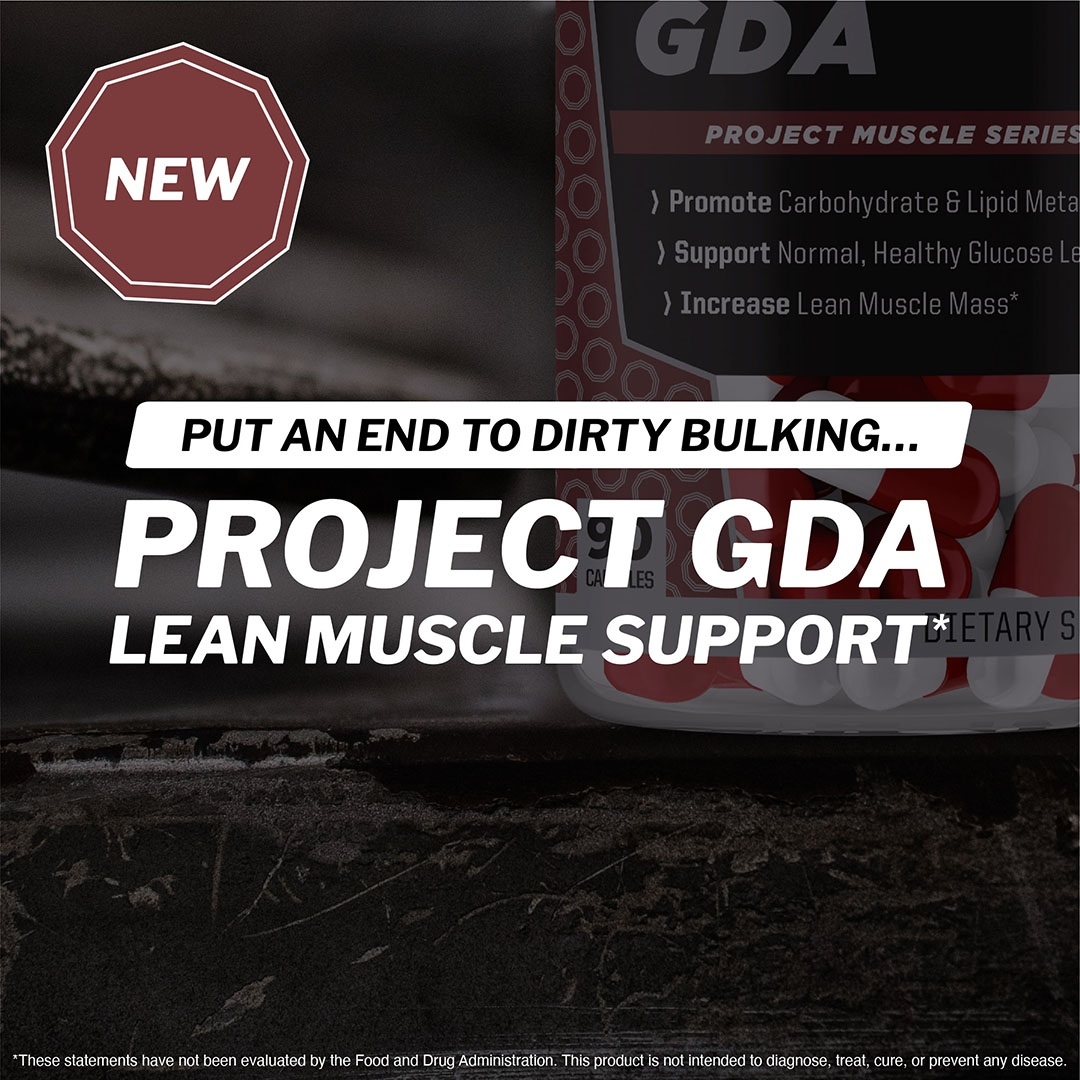
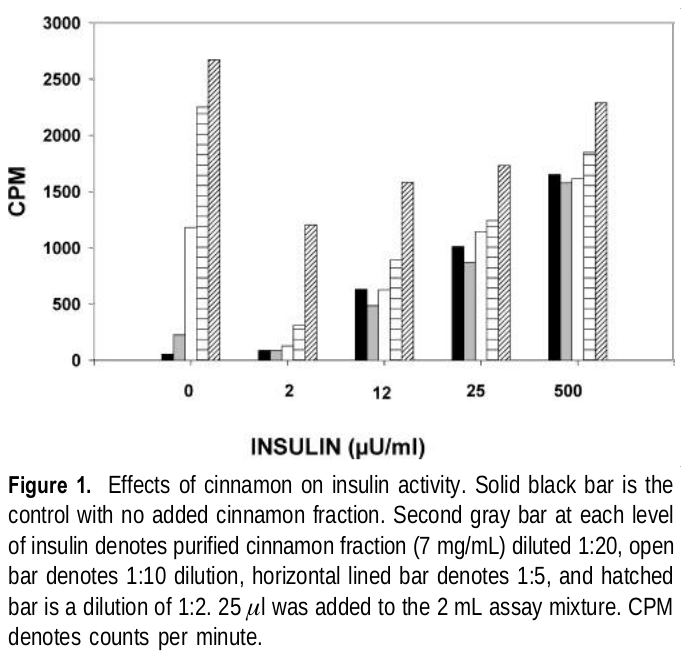
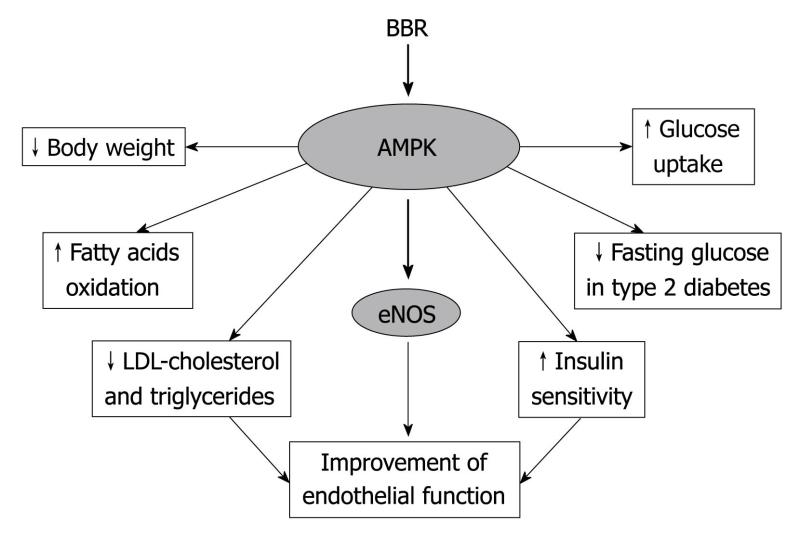
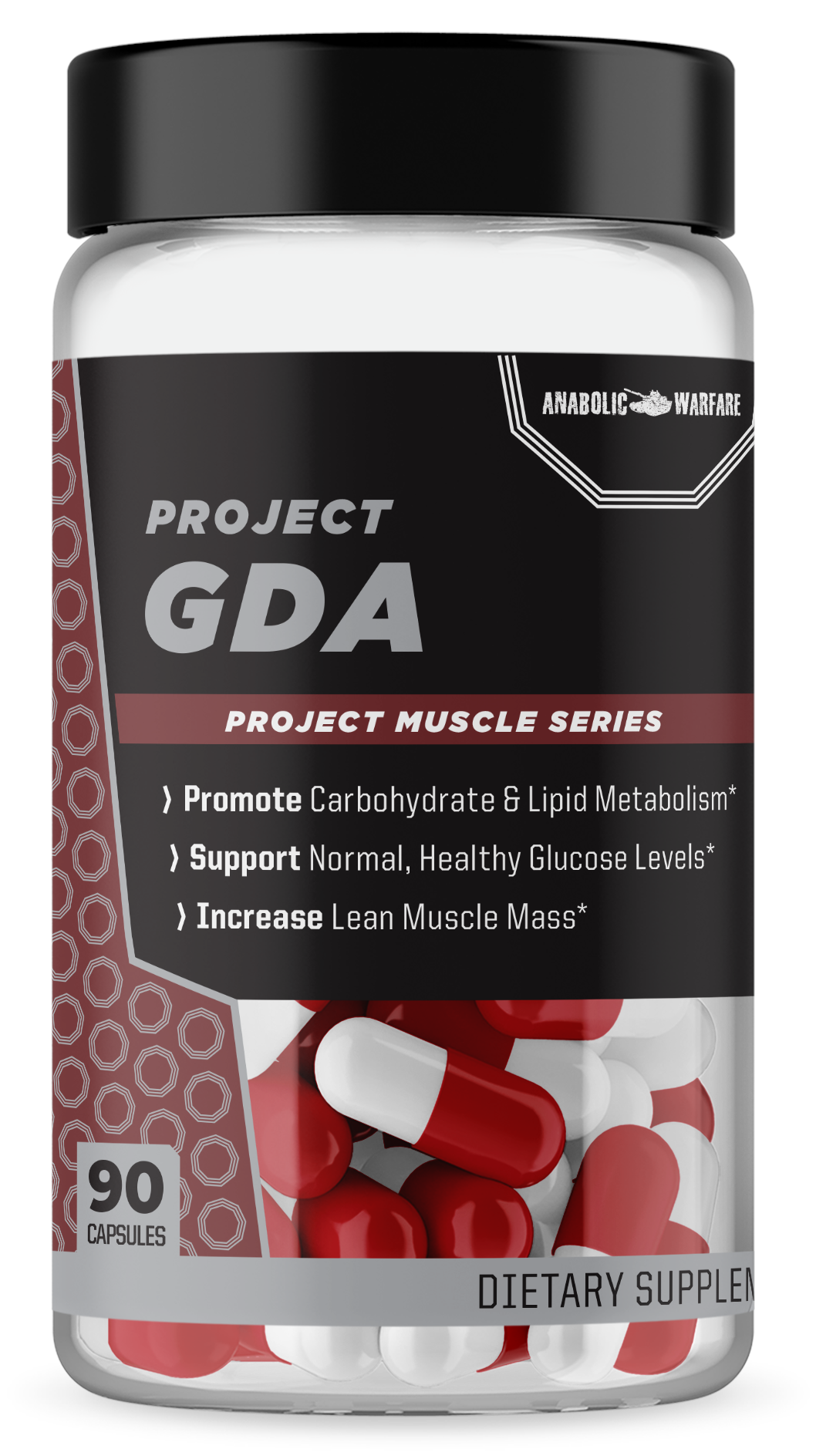
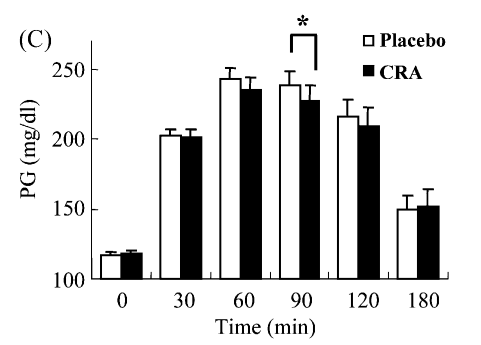
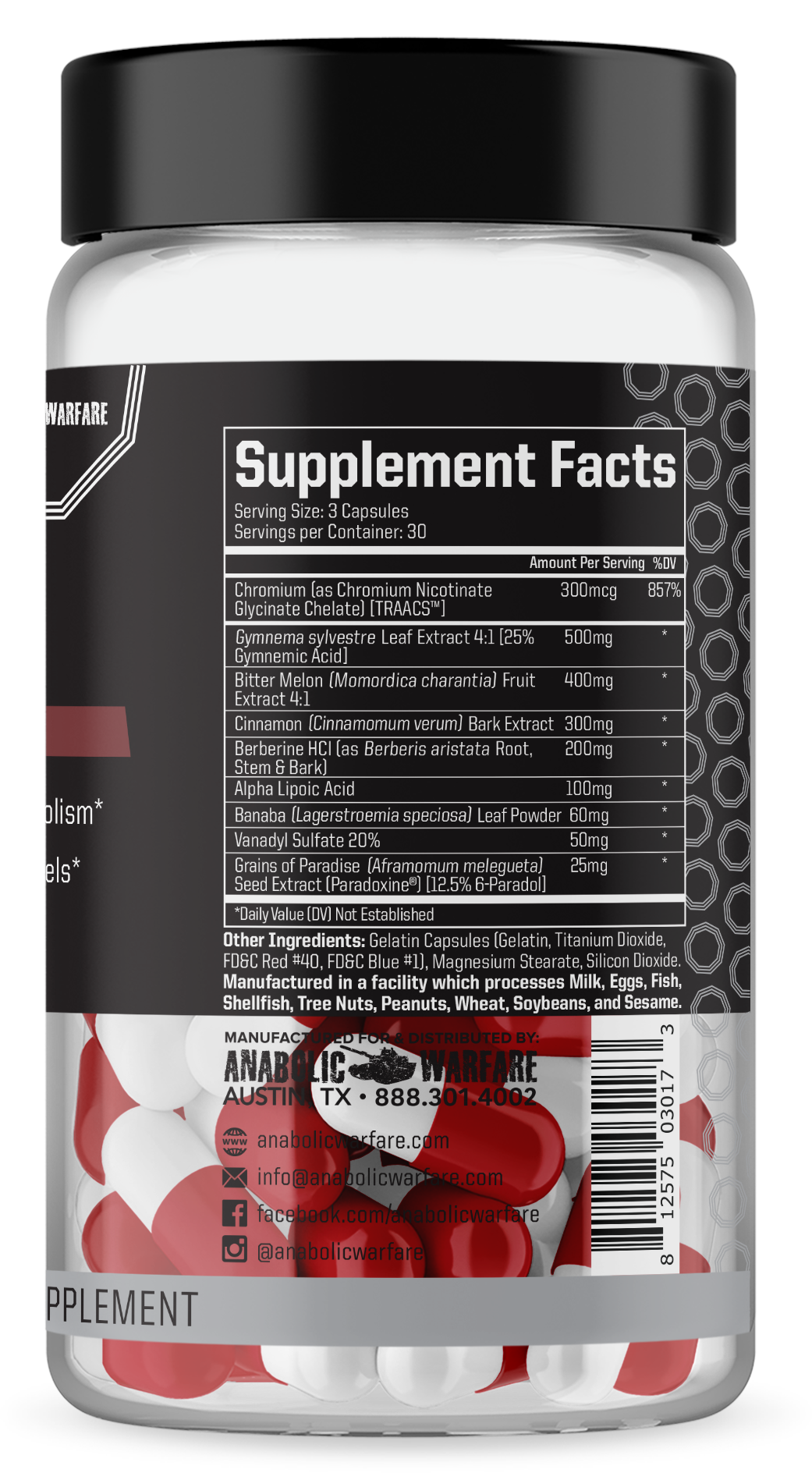
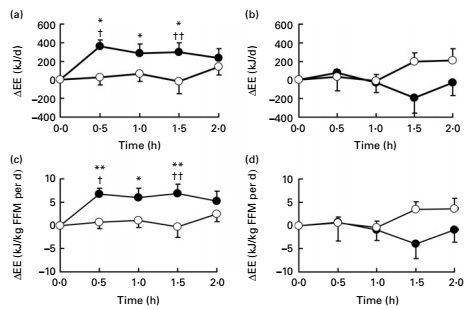
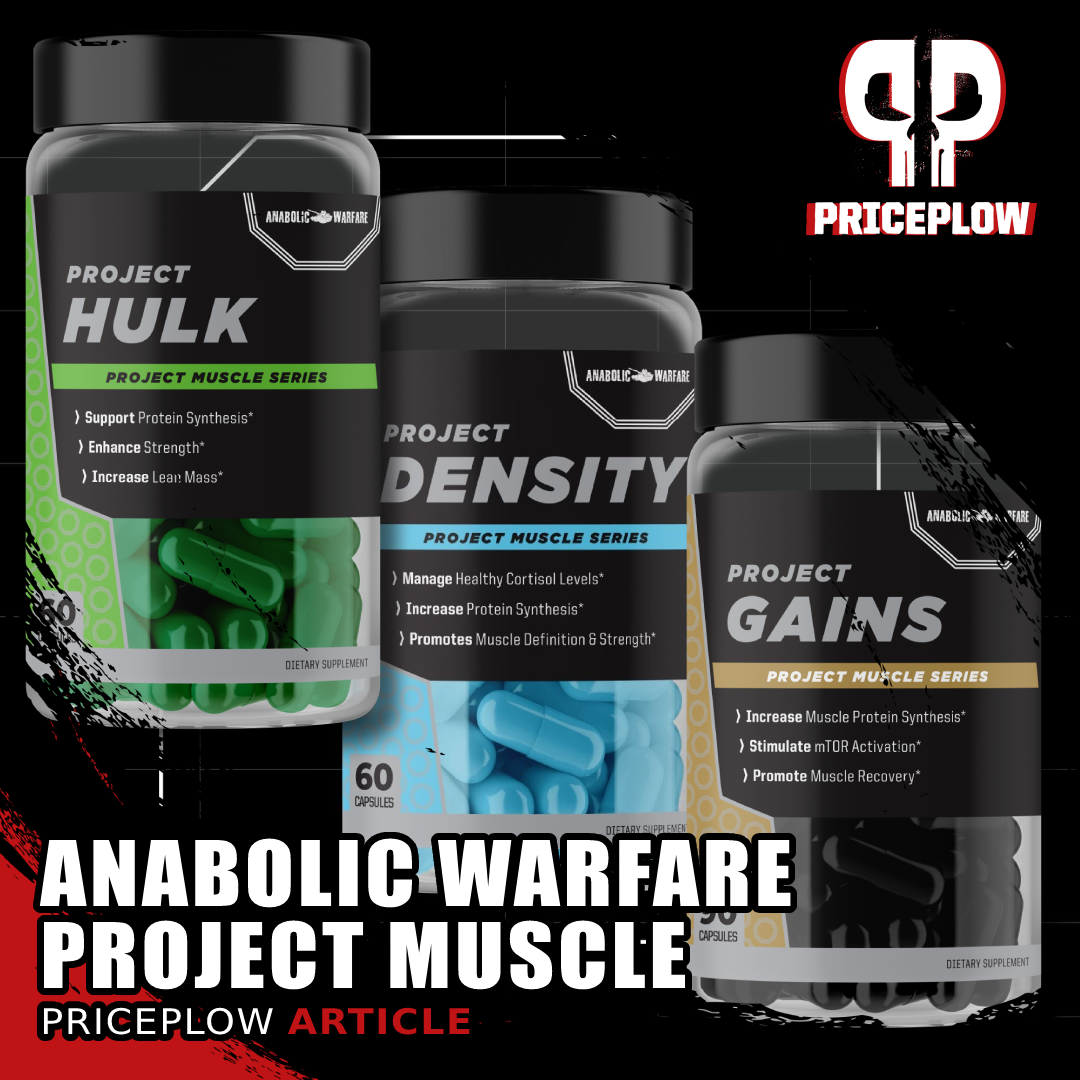
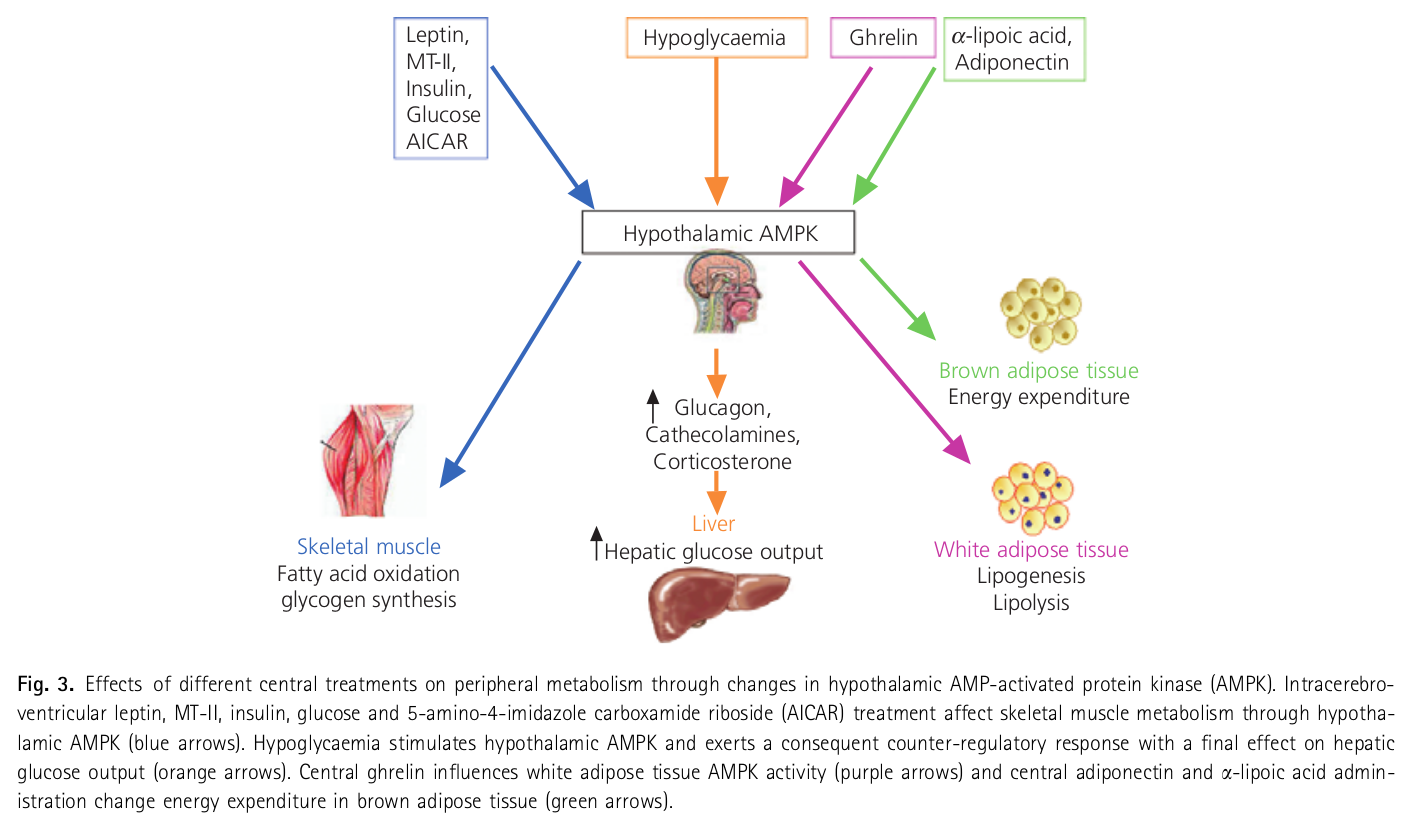
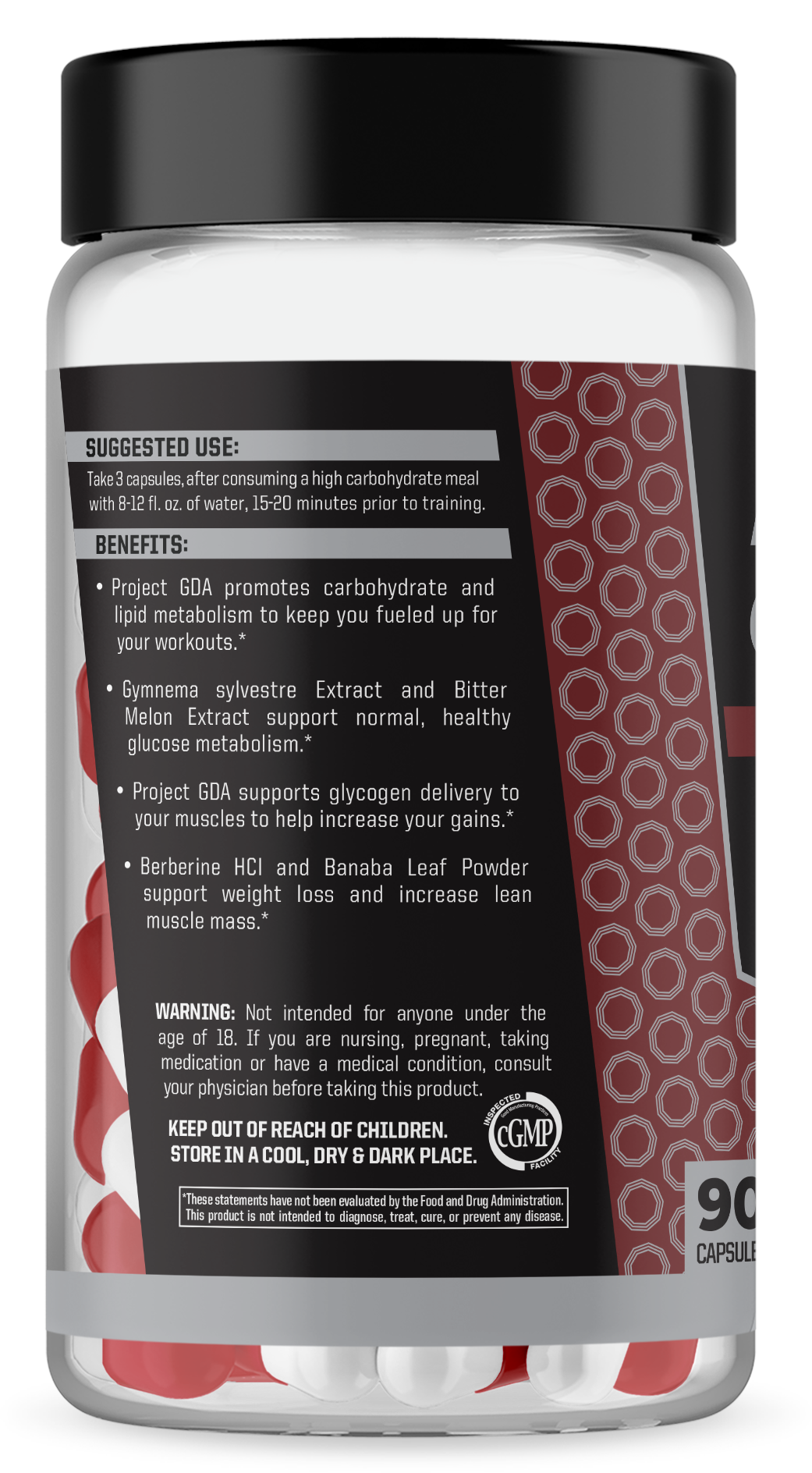


Comments and Discussion (Powered by the PricePlow Forum)